Romania Residents’ Attitude Investigation toward the Transition to Renewable Energy Sources through Importance-Performance Analysis
Abstract
1. Introduction
- Through “green tariff programs” that have a variety of offers that include the supply of electricity or heating generated entirely or partially from renewable sources;
- Choosing “pay-as-you-go (PAYGo) services”, which offer customers an alternative to contracting with utilities (e.g., decentralized solar photovoltaic systems);
- Through “peer-to-peer energy trading programs” that allow urban consumers to buy renewable energy from other citizens or businesses rather than utilities.
- The choice to buy energy from a supplier that offers electricity or thermal energy from renewable sources, where green tariffs are affordable;
- Total or partial production of their own energy needs;
- The association to form community energy projects;
- Involvement in development projects an urban energy system and
- Promoting energy consumption from renewable resources.
2. Background: Adoption of Renewable Energy Sources
2.1. Adoption of Renewable Energy Sources by Romania
2.2. Literature Review on Resident Perception
3. Methodology
3.1. Population of Survey
| Oradea | Timișoara | |
|---|---|---|
| Population * | 183,105 | 250,849 |
| Rank among cities in Romania according to the number of inhabitants * | 11 | 4 |
| The share of the economy of the county of which the city is a part in the GDP ** | 2.4 (Bihor County) | 4.6 (Timiș County) |
| GDP per capita (as a percentage of the national average) ** | 81.5 (Bihor County) | 123.4 (Timiș County) |
| Net salary gain (percentage of the national average) ** | 82.2 (Bihor County) | 113.7 (Timiș County) |
| Installed power in KW *** | 2551 (Bihor County) | 4337 (Timiș County) |
| Number of prosumers in 2021 *** | 443 (Bihor County) | 549 (Timiș County) |
3.2. Survey
- Identifying the general attitude of residents towards renewable energy sources;
- Assessing the level of direct and indirect personal experience of residents with the types of renewable energy sources;
- Discovering the main barriers to the adoption of renewable energy sources, according to the respondents;
- Identifying the influencing factors of the adoption of renewable energy sources that are important and in which Romania has a good performance, in the opinion of the residents;
- Identifying the influencing factors of the adoption of renewable energy sources that the Romanian government must focus on, according to the residents;
- Identifying the influencing factors of the adoption of renewable energy sources that are less priority or even unimportant in the adoption of renewable energy sources by residents.
- Identifying possible significant differences between the respondents of the two cities.
3.3. Importance-Performance Analysis
4. Results
5. Conclusions
6. Limits of the Paper and Future Research
Author Contributions
Funding
Informed Consent Statement
Conflicts of Interest
Appendix A
| Factors Category | Factors | References | |
|---|---|---|---|
| Administrative support factors | 1. | Solving the problem of grid-connected energy production of renewable energy systems and the electricity company | [35] |
| 2. | Overcoming legislative regulation issues | [12,35] | |
| 3. | Extending the scale of the renewable energy market/offer | [35] | |
| 4. | Construction of public facilities in the place where renewable energy is installed | [35] | |
| 5. | Increasing the effectiveness of the government administrative process (time and cost) | [35] | |
| 6. | The existence of a professional authority for the correct certification of the design of renewable energy equipment | [35] | |
| 7. | Resolving relevant requirements for renewable energy installation (e.g., environmental assessment) | [35] | |
| 8. | Coordination between institutions to support the production and consumption of renewable energy | [14,35,40] | |
| 9. | Informing and educating the population about renewable energy. Awareness of environmental issues | [6,8,10,12,13,40] | |
| Government financial support | 1. | The government’s provision of a subsidy for the installation of renewable energy equipment | [14,35,40] |
| 2. | The government’s provision of a reasonable buy-in rate for electricity produced by renewable energy equipment | [35] | |
| 3. | The government’s provision of incentives for those who produce energy from renewable sources | [6,35] | |
| 4. | Government provision of tax exemptions | [5,35] | |
| 5. | Reducing the bureaucracy of related procedures | [41] | |
| Market factors | 1. | Equipment acquisition costs | [10,13] |
| 2. | Existence of standards for installation and design | [14,40] | |
| 3. | The existence of reliable energy equipment installation companies | [42,43] | |
| 4. | Existence of energy equipment monitoring services after installation | [44] | |
| Factors related to the culture of the community | 1. | The desire for independence of household consumers to produce their own energy. Independence from the energy sources of other countries (Russia) but even from other states | [6,18] |
| 2. | Have other home producers of renewable energy nearby | [10] | |
| 3. | People’s ability to change habits | [13] |
References
- European Commission. REPowerEU: A Plan to Rapidly Reduce Dependence on Russian Fossil Fuels and Fast Forward the Green Transition*. Available online: https://ec.europa.eu/commission/presscorner/detail/en/IP_22_3131 (accessed on 1 July 2023).
- REN21. Renewables in Cities 2021 Global Status Report. Available online: https://www.ren21.net/reports/cities-global-status-report/ (accessed on 2 December 2022).
- Bankwatch for People and Environment. The Romanian Renewable Energy Sector: A Potential Still Untapped. Analysing the Measures Supporting the Development of the Renewable Energy Sector. 2020. Available online: https://bankwatch.org/wp-content/uploads/2021/04/Romanian-renewable-energy-sector-bankwatch.pdf (accessed on 2 July 2023).
- International Trade Administration. Romania–Energy. 2022. Available online: https://www.trade.gov/country-commercial-guides/romania-energy (accessed on 3 July 2023).
- Sardianou, E.; Genoudi, P. Which factors affect the willingness of consumers to adopt renewable energies? Renew. Energy 2013, 57, 1–4. [Google Scholar] [CrossRef]
- Engelken, M.; Römer, B.; Drescher, M.; Welpe, I. Why homeowners strive for energy self-supply and how policy makers can influence them. Energy Policy 2018, 117, 423–433. [Google Scholar] [CrossRef]
- Ropuszyńska-Surma, E.; Węglarz, M. Profiling end user of renewable energy sources among residential consumers in Poland. Sustainability 2018, 10, 4452. [Google Scholar] [CrossRef]
- Szakály, Z.; Balogh, P.; Kontor, E.; Gabnai, Z.; Bai, A. Attitude toward and Awareness of Renewable Energy Sources: Hungarian Experience and Special Features. Energies 2020, 14, 22. [Google Scholar] [CrossRef]
- Djurisic, V.; Smolovic, J.C.; Misnic, N.; Rogic, S. Analysis of public attitudes and perceptions towards renewable energy sources in Montenegro. Energy Rep. 2020, 6, 395–403. [Google Scholar] [CrossRef]
- Irfan, M.; Elavarasan, R.M.; Hao, Y.; Feng, M.; Sailan, D. An assessment of consumers’ willingness to utilize solar energy in China: End-users’ perspective. J. Clean. Prod. 2021, 292, 126008. [Google Scholar] [CrossRef]
- Asante, D.; Ampah, J.D.; Afrane, S.; Adjei-Darko, P.; Asante, B.; Fosu, E.; Dankwah, D.A.; Amoh, P.O. Prioritizing strategies to eliminate barriers to renewable energy adoption and development in Ghana: A CRITIC-fuzzy TOPSIS approach. Renew. Energy 2022, 195, 47–65. [Google Scholar] [CrossRef]
- Marra, A.; Colantonio, E. The path to renewable energy consumption in the European Union through drivers and barriers: A panel vector autoregressive approach. Socio-Econ. Plan. Sci. 2021, 76, 100958. [Google Scholar] [CrossRef]
- Štreimikienė, D.; Lekavičius, V.; Stankūnienė, G.; Pažėraitė, A. Renewable Energy Acceptance by Households: Evidence from Lithuania. Sustainability 2022, 14, 8370. [Google Scholar] [CrossRef]
- Asante, D.; He, Z.; Adjei, N.O.; Asante, B. Exploring the barriers to renewable energy adoption utilising MULTIMOORA- EDAS method. Energy Policy 2020, 142, 111479. [Google Scholar] [CrossRef]
- Vand, B.; Hast, A.; Bozorg, S.; Li, Z.; Syri, S.; Deng, S. Consumers’ Attitudes to Support Green Energy: A Case Study in Shanghai. Energies 2019, 12, 2379. [Google Scholar] [CrossRef]
- Sovacool, B.K. The cultural barriers to renewable energy and energy efficiency in the United States. Technol. Soc. 2009, 31, 365–373. [Google Scholar] [CrossRef]
- Lucas, H.; Carbajo, R.; Machiba, T.; Zhukov, E.; Cabeza, L.F. Improving public attitude towards renewable energy. Energies 2021, 14, 4521. [Google Scholar] [CrossRef]
- Motz, A.; Petrovich, B.; Gahrens, S.; Wüstenhagen, R. Solar sharing economy or “my home is my power plant”? Profiling collective and individual solar prosumers in Southern Switzerland. IAEE Energy Forum 2022, 2, 41–44. [Google Scholar]
- Gutteling, J.; Hanssen, L.; van Der Veer, N.; Seydel, E. Trust in governance and the acceptance of genetically modified food in the Netherlands. Public Underst. Sci. 2006, 15, 103–112. [Google Scholar] [CrossRef]
- Liu, L.; Bouman, T.; Perlaviciute, G.; Steg, L. Effects of trust and public participation on acceptability of renewable energy projects in the Netherlands and China. Energy Res. Soc. Sci. 2019, 53, 137–144. [Google Scholar] [CrossRef]
- Maxim, A.; Jijie, D.T.; Roman, T. Why Are Households Willing to Pay for Renewable Energy? Lessons from Romania. Front. Environ. Sci. 2022, 10, 921152. [Google Scholar] [CrossRef]
- Cristea, M.; Cristea, C.; Tîrnovan, R.A.; Birou, I.; Şerban, F.M.; Balog, E. Feasibility of grid-connected residential photovoltaic systems under the new Romanian renewable energy law. In Proceedings of the 2023 10th International Conference on Modern Power Systems (MPS), Cluj-Napoca, Romania, 21–23 June 2023; IEEE: New York, NY, USA, 2023; pp. 1–5. [Google Scholar]
- Karda, S.; Nagy-György, T.; Boros, I. Evolution of the Payback Period for Energy-Efficient Residential Buildings in Romania in the Last Decade. Sustainability 2023, 15, 8986. [Google Scholar] [CrossRef]
- Gaman, F.; Iacoboaea, C.; Aldea, M.; Luca, O.; Stănescu, A.A.; Boteanu, C.M. Energy Transition in Marginalized Urban Areas: The Case of Romania. Sustainability 2022, 14, 6855. [Google Scholar] [CrossRef]
- Dincă, V.M.; Busu, M.; Nagy-Bege, Z. Determinants with Impact on Romanian Consumers’ Energy-Saving Habits. Energies 2022, 15, 4080. [Google Scholar] [CrossRef]
- Autoritatea Națională de Reglementare în Domeniul Energiei. Direcția Generală Surse Regenerabile, Cogenerare și Energie Termică, Raport Privind Monitorizarea Activităţii Prosumatorilor Pentru Anul 2022. Available online: https://arhiva.anre.ro/ro/energie-electrica/legislatie/prosumatori/prosumatori-rapoarte (accessed on 5 July 2023).
- Profit.ro. INFOGRAFICE Numărul Prosumatorilor din România Depășește 63.000. Available online: https://www.profit.ro/povesti-cu-profit/energie/infografice-numarul-prosumatorilor-din-romania-depaseste-63-000-21234280?source=biziday (accessed on 2 July 2023).
- National Commission of Forecasting and Strategy. 2023. Available online: https://cnp.ro/wp-content/uploads/2023/01/PROGNOZA-2022-2026-in-profil-teritorial-aferenta-Prognozei-macroeconomice-de-toamna-2022-.pdf (accessed on 3 July 2023).
- Martilla, J.A.; James, J.C. Importance-performance analysis. J. Mark. 1977, 41, 77–79. [Google Scholar] [CrossRef]
- Ban, O.; Bogdan, V.; Tușe, D. Tourist Destination Assessment by Revised Importance-Performance Analysis. In Eurasian Economic Perspectives, Proceedings of the 24th Eurasia Business and Economics Society Conference, Bangkok, Thailand, 10–12 January 2018; Springer: Cham, Switzerland, 2019; Volume 11, pp. 49–68. [Google Scholar] [CrossRef]
- Caber, M.; Albayrak, T.; Matzler, K. Classification of the destination attributes in the content of competitiveness (by revised importance-performance analysis). J. Vacat. Mark. 2012, 18, 43–56. [Google Scholar] [CrossRef]
- Deng, W.-J.; Kuo, Y.-F.; Chen, W.-C. Revised importance–performance analysis: Three-factor theory and benchmarking. Serv. Ind. J. 2008, 28, 37–51. [Google Scholar] [CrossRef]
- Deng, W. Using a revised importance–performance analysis approach: The case of Taiwanese hot springs tourism. Tour. Manag. 2007, 28, 1274–1284. [Google Scholar] [CrossRef]
- Ban, O.I.; Droj, L.; Tușe, D.A.; Botezat, E. Operationalization of importance-performance analysis with nine categories and tested for green practices and financial evaluation. Technol. Econ. Dev. Econ. 2022, 28, 1711–1738. [Google Scholar] [CrossRef]
- Chen, W.C.; Chen, W.K.; Chen, C.W.; Lo, C.C. An empirical study of willingness to renewable energy installation using importance-performance analysis: The case of Taiwan. J. Ind. Prod. Eng. 2019, 36, 451–460. [Google Scholar] [CrossRef]
- Lee, E. Indoor environmental quality (IEQ) of LEED-certified home: Importance-performance analysis (IPA). Build. Environ. 2019, 149, 571–581. [Google Scholar] [CrossRef]
- Birendra, K.C.; Paudyal, R.; Neupane, S.S. Residents’ perspectives of a newly developed ecotourism project: An assessment of effectiveness through the lens of an importance–performance analysis. Asia Pac. J. Tour. Res. 2018, 23, 560–572. [Google Scholar] [CrossRef]
- Masoumik, S.M.; Abdul-Rashid, S.H.; Olugu, E.U. Importance-performance analysis of green strategy adoption within the Malaysian manufacturing industry. Procedia CIRP 2015, 26, 646–652. [Google Scholar] [CrossRef][Green Version]
- Lee, W.; Barber, T.; Tyrrell, T. Green attendees’ evaluation of green attributes at the convention centre: Using importance–performance analysis. Anatolia 2013, 24, 221–240. [Google Scholar] [CrossRef]
- Karytsas, S.; Choropanitis, I. Barriers against and actions towards renewable energy technologies diffusion: A Principal Component Analysis for residential ground source heat pump (GSHP) systems. Renew. Sustain. Energy Rev. 2017, 78, 252–271. [Google Scholar] [CrossRef]
- Stephens, S.; Robinson, B.M.K. The social license to operate in the onshore wind energy industry: A comparative case study of Scotland and South Africa. Energy Policy 2021, 148, 111981. [Google Scholar] [CrossRef]
- Mignon, I.; Broughel, A.E. What interests do intermediaries prioritize during wind- and solar project development? Environ. Innov. Soc. Transit. 2020, 36, 393–405. [Google Scholar] [CrossRef]
- De Wilde, M. The sustainable housing question: On the role of interpersonal, impersonal and professional trust in low-carbon retrofit decisions by homeowners. Energy Res. Soc. Sci. 2019, 51, 138–147. [Google Scholar] [CrossRef]
- Gabriel, C.A.; Kirkwood, J. Business models for model businesses: Lessons from renewable energy entrepreneurs in developing countries. Energy Policy 2016, 95, 336–349. [Google Scholar] [CrossRef]
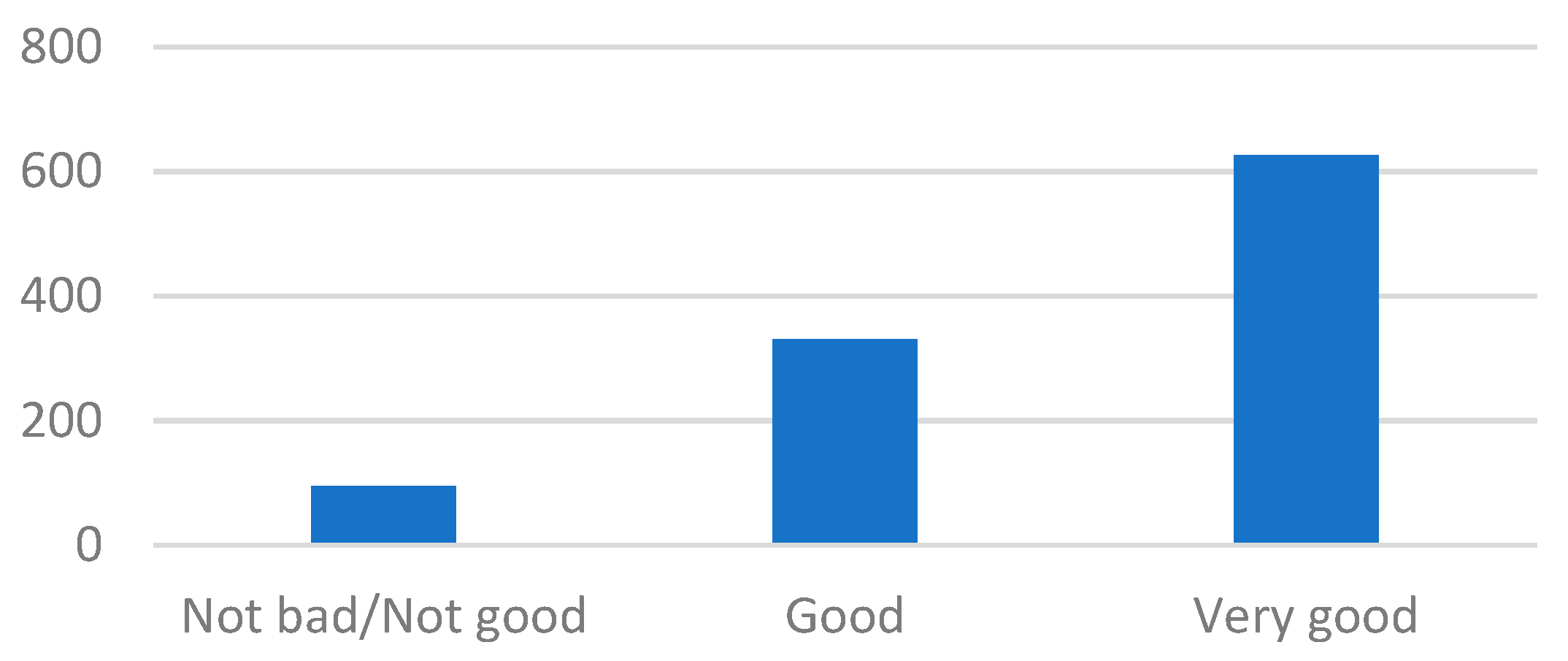
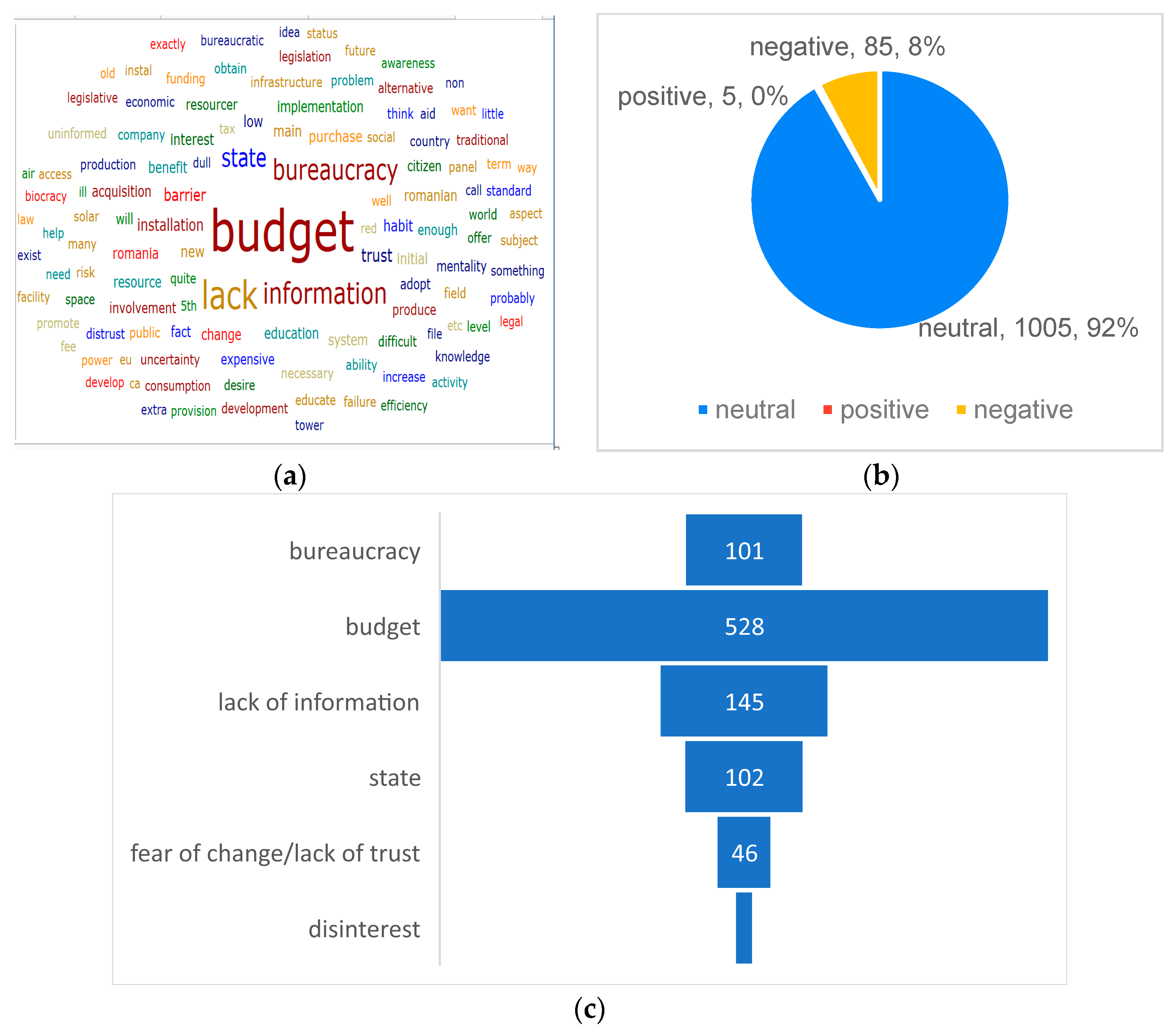
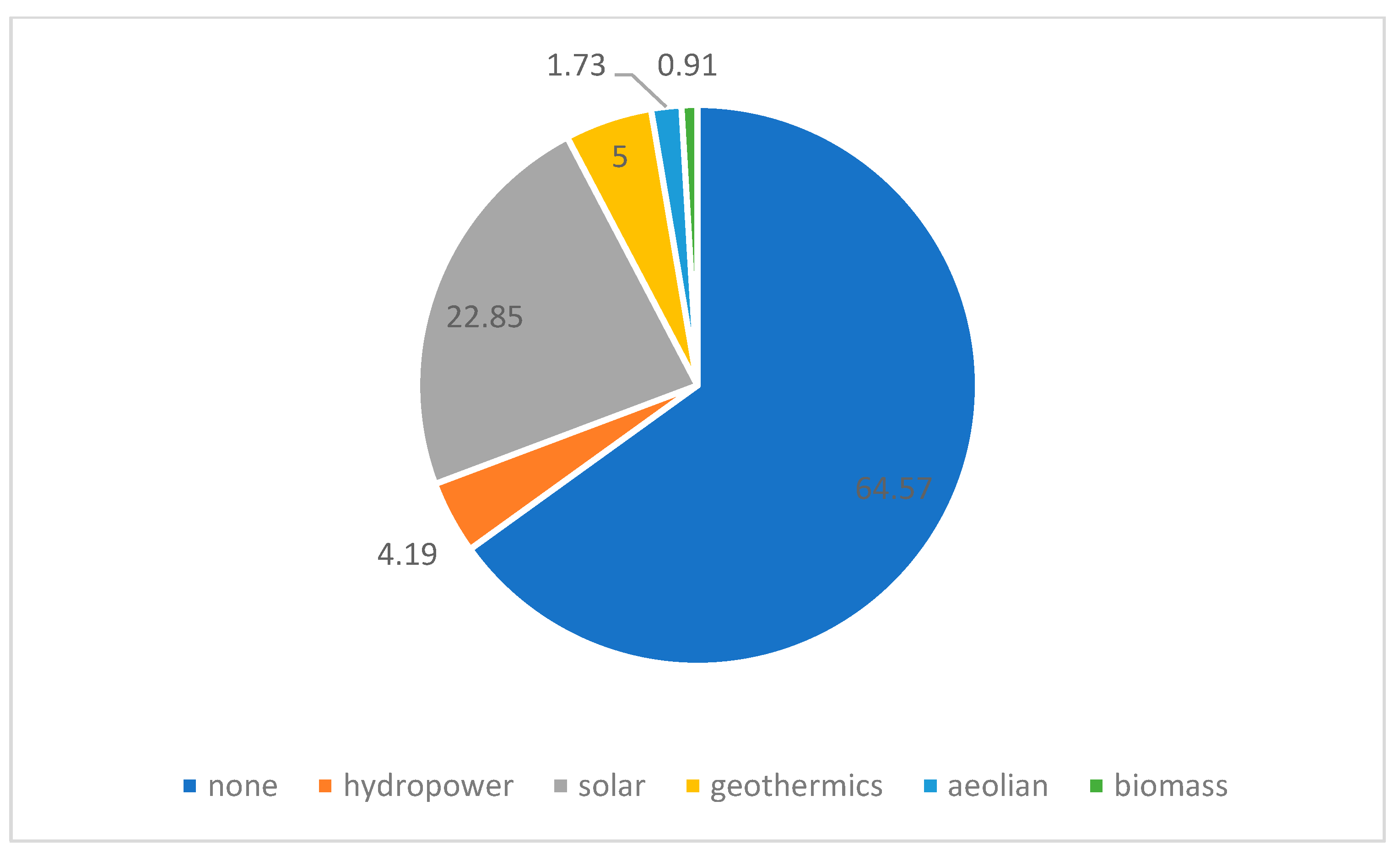
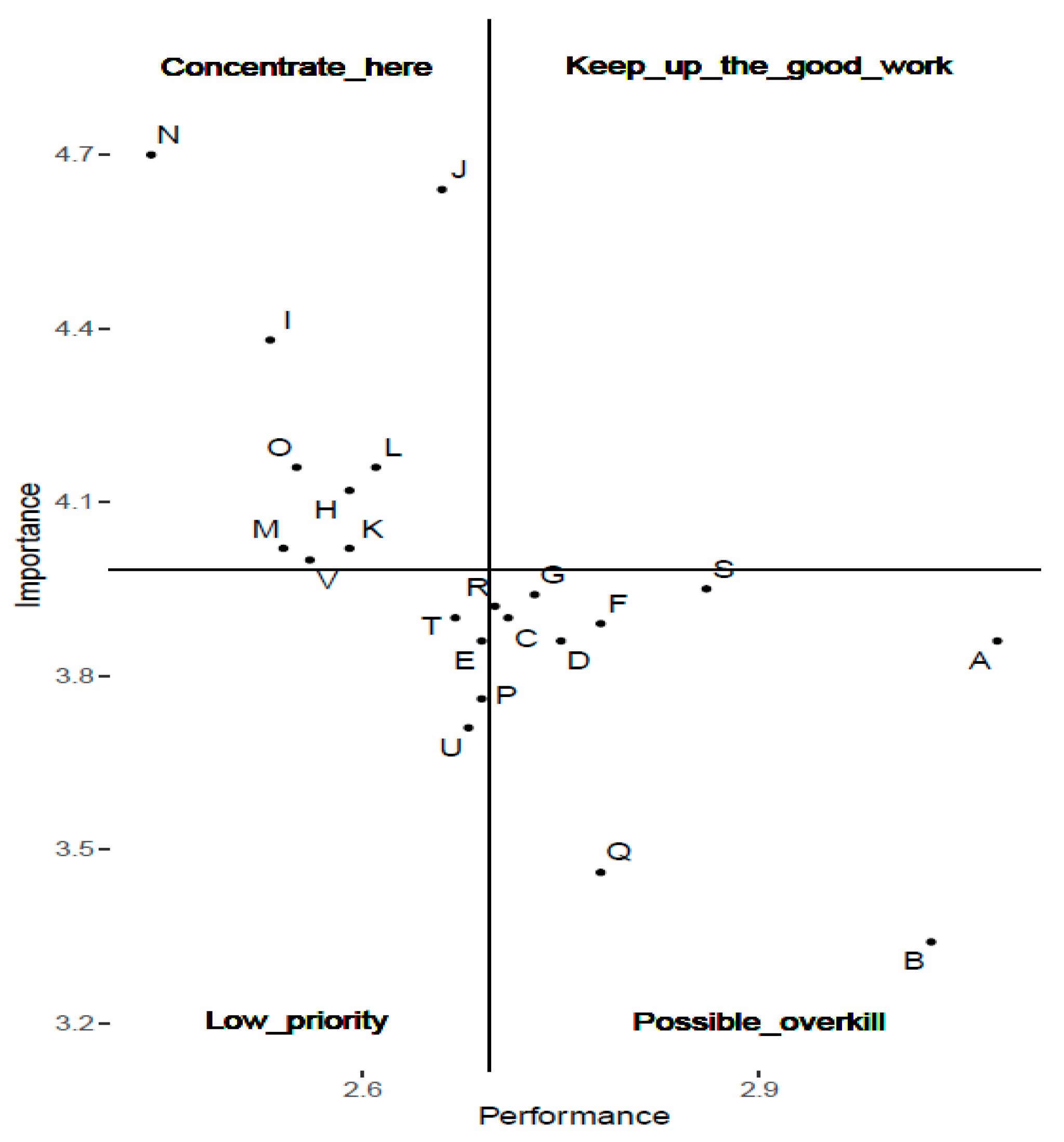
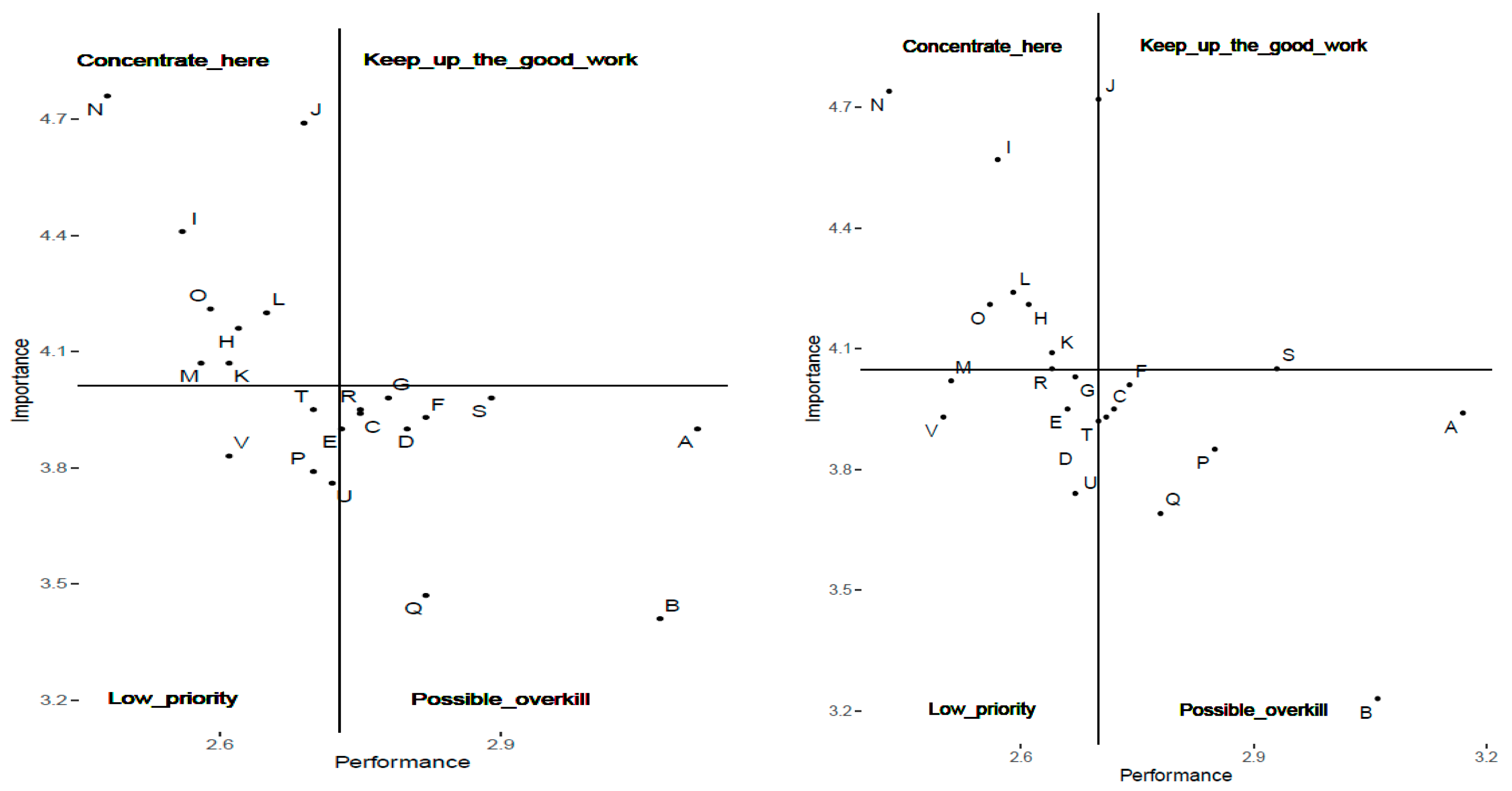
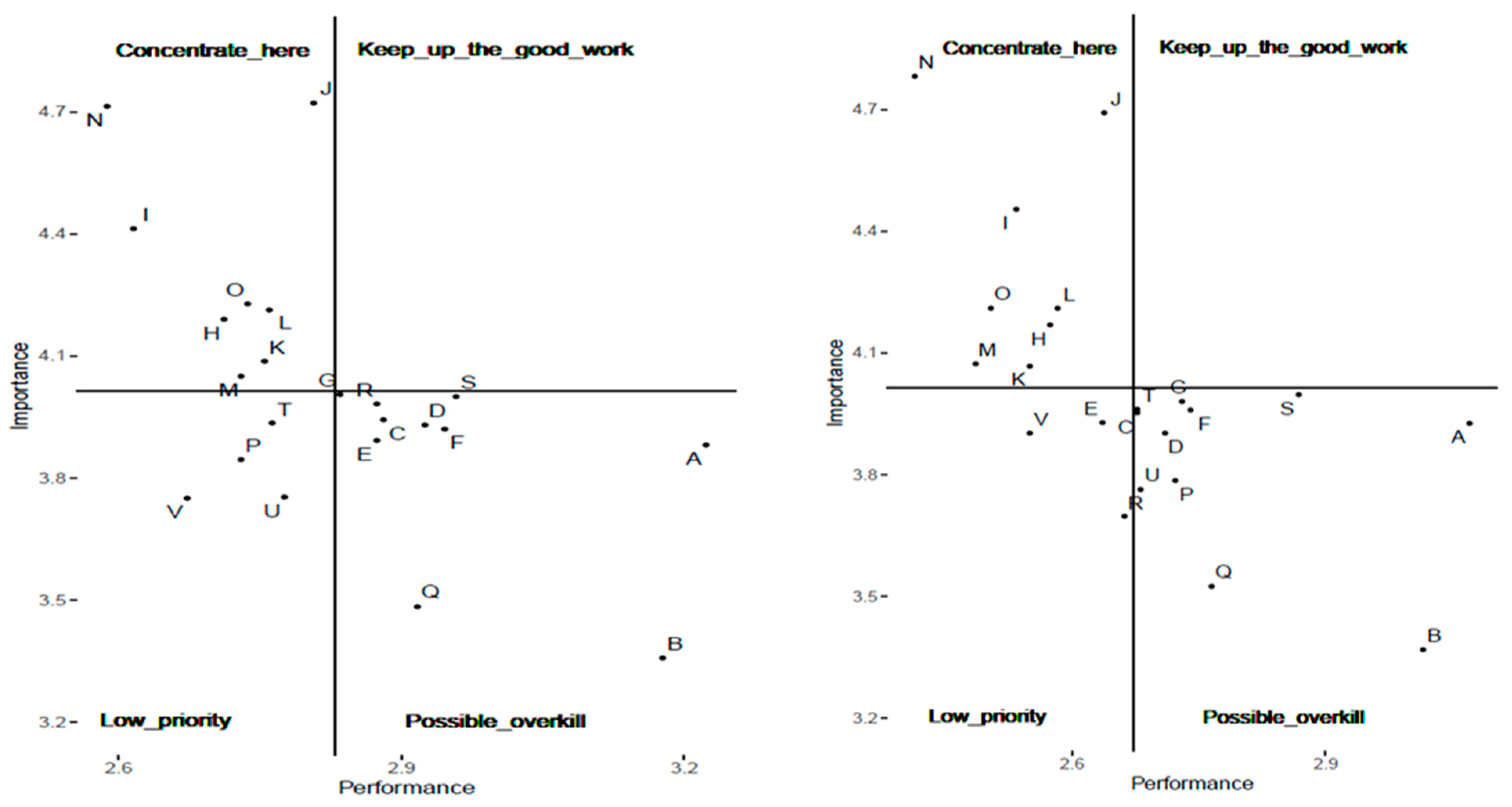
| Authors | Sample/Method/Country | Motivational Factors/Predictors of Positive Attitude towards the Adoption of Renewable Energy Sources |
|---|---|---|
| Sardianou, Genoudi [5] | a survey of 200 consumers (150 valid), stratified sampling method in Greece | socio-demographic factors that have a positive influence (middle age, high income, higher education) and economic factors that have a positive influence (tax deductions) |
| Engelken Römer, Drescher, Welpe [6] | 20 interviews and 395 questionnaires among owners of single-family houses and apartments in Germany | financial and autarkic benefits, environmental awareness, technological affinity |
| Ropuszyńska-Surma, Węglarz, [7] | 960 questionnaires applied to homeowners in Poland | segmentation criteria used: gender, age, economic status, knowledge about energy, attitudes towards RES *, and pro-environmental behavior |
| Szakály, Balogh, Kontor, Gabnai, Bai [8] | 1002 people in Hungary | higher level of studies, high income, intellectual profession, and awareness of one’s own health and the environment |
| Djurisic, Smolovic, Misnic, Rogic [9] | Questionnaire applied to 1012 respondents in Montenegro | other variables being equal, RES behavior is influenced first by RES perception and then by awareness |
| Irfan, Elavarasan, Hao, Feng, Sailan [10] | 351 households in Pakistan | awareness, self-efficacy perception, and neighbors’ participation have significant and positive effects, the cost has a negative effect, and environmental impact has no insignificant effects |
| Gender | Absolute Frequency | Relative Frequency (%) |
|---|---|---|
| men | 467 | 42.53 |
| woman | 584 | 53.18 |
| I prefer not to say | 47 | 4.28 |
| Education | ||
| secondary, or under | 15 | 1.36 |
| high school, including professional, complementary, apprentice, post-high school | 241 | 21.94 |
| university degree | 627 | 57.1 |
| postgraduate, including master’s, doctorate | 215 | 19.58 |
| Age | ||
| 20–24 | 424 | 38.61 |
| 25–34 | 242 | 22.04 |
| 35–44 | 196 | 17.85 |
| 44–65 | 206 | 18.76 |
| above 65 | 32 | 2.91 |
| Own | ||
| apartment in a block in Oradea | 491 | 44.71 |
| house in Oradea | 429 | 39.07 |
| apartment in a block in Timișoara | 123 | 11.20 |
| house in Timișoara | 55 | 5.00 |
| Total respondents | ||
| Oradea | 920 | 83.78 |
| Timișoara | 178 | 16.21 |
| Factors | Code | Performance | Importance |
|---|---|---|---|
| Solving the problem of grid-connected energy production of renewable energy systems and the electricity company | A | 3.088 | 3.864 |
| Overcoming legislative regulation issues | B | 3.036 | 3.342 |
| Extending the scale of the renewable energy market/offer | C | 2.717 | 3.902 |
| Construction of public facilities in the place where renewable energy is installed | D | 2.754 | 3.866 |
| Increasing the effectiveness of the government administrative process (time and cost) | E | 2.69 | 3.869 |
| Existence of a professional authority for the correct certification of the design of renewable energy equipment | F | 2.78 | 3.899 |
| Resolving relevant requirements for renewable energy installation (e.g., environmental assessment) | G | 2.735 | 3.942 |
| Coordination between institutions to support the production and consumption of renewable energy | H | 2.592 | 4.127 |
| Informing and educating the population about renewable energy. Awareness of environmental issues | I | 2.533 | 4.387 |
| Government’s provision of a subsidy for the installation of renewable energy equipment | J | 2.666 | 4.648 |
| Government’s provision of a reasonable buy-in rate for electricity produced by renewable energy equipment | K | 2.592 | 4.027 |
| Government’s provision of incentives for those who produce energy from renewable sources | L | 2.615 | 4.162 |
| Government provision of tax exemptions | M | 2.542 | 4.02 |
| Reducing the bureaucracy of related procedures | N | 2.447 | 4.702 |
| Equipment acquisition costs | O | 2.557 | 4.167 |
| Existence of standards for installation and design | P | 2.693 | 3.762 |
| Existence of reliable energy equipment installation companies | Q | 2.786 | 3.468 |
| Existence of energy equipment monitoring services after installation | R | 2.705 | 3.926 |
| Desire for the independence of household consumers to produce their own energy | S | 2.866 | 3.951 |
| Independence from the energy sources of other countries (Russia) but even from other states | T | 2.675 | 3.906 |
| Have other home producers of renewable energy nearby | U | 2.683 | 3.715 |
| People’s ability to change habits | V | 2.563 | 4.009 |
| MEAN | 2.696 | 3.984 |
| ORADEA Code | Performance | Importance | TIMIȘOARA Code | Performance | Importance |
|---|---|---|---|---|---|
| A | 3.11 | 3.90 | A | 3.17 | 3.94 |
| B | 3.07 | 3.41 | B | 3.06 | 3.23 |
| C | 2.75 | 3.94 | C | 2.72 | 3.95 |
| D | 2.80 | 3.90 | D | 2.71 | 3.93 |
| E | 2.73 | 3.90 | E | 2.66 | 3.95 |
| F | 2.82 | 3.93 | F | 2.74 | 4.01 |
| G | 2.78 | 3.98 | G | 2.67 | 4.03 |
| H | 2.62 | 4.16 | H | 2.61 | 4.21 |
| I | 2.56 | 4.41 | I | 2.57 | 4.57 |
| J | 2.69 | 4.69 | J | 2.7 | 4.72 |
| K | 2.61 | 4.07 | K | 2.64 | 4.09 |
| L | 2.65 | 4.20 | L | 2.59 | 4.24 |
| M | 2.58 | 4.07 | M | 2.51 | 4.02 |
| N | 2.48 | 4.76 | N | 2.43 | 4.74 |
| O | 2.59 | 4.21 | O | 2.56 | 4.21 |
| P | 2.70 | 3.79 | P | 2.85 | 3.85 |
| Q | 2.82 | 3.47 | Q | 2.78 | 3.69 |
| R | 2.75 | 3.95 | R | 2.64 | 4.05 |
| S | 2.89 | 3.98 | S | 2.93 | 4.05 |
| T | 2.70 | 3.95 | T | 2.7 | 3.92 |
| U | 2.72 | 3.76 | U | 2.67 | 3.74 |
| V | 2.61 | 3.83 | V | 2.5 | 3.93 |
| MEAN | 2.728 | 4.011 | MEAN | 2.293 | 3.543 |
| Quadrant | Global | Oradea | Timișoara |
|---|---|---|---|
| Concentrate here | N, J, I, O, L, H, M, V, K | N, J, I, O, L, H, M, K | N, I, L, O, H, K |
| Keep up the Good Work | - | - | J, S |
| Low Priority | T, E, P, U | T, P, U, V | T, E, U, M, R, G, V, D |
| Possible Overkill | G, R, C, F, D, Q, S, A, B | G, R, C, F, D, Q, S, A, B, E | C, F, A, B, P, Q |
| Code | Performance Prosumers | Importance Prosumers | Performance Non-Prosumers | Importance Non-Prosumers |
|---|---|---|---|---|
| A | 3.223 | 3.881 | 3.07 | 3.926 |
| B | 3.177 | 3.357 | 3.015 | 3.368 |
| C | 2.881 | 3.943 | 2.677 | 3.952 |
| D | 2.925 | 3.93 | 2.71 | 3.902 |
| E | 2.874 | 3.892 | 2.636 | 3.928 |
| F | 2.946 | 3.92 | 2.74 | 3.959 |
| G | 2.835 | 4.005 | 2.73 | 3.98 |
| H | 2.712 | 4.19 | 2.574 | 4.169 |
| I | 2.616 | 4.413 | 2.534 | 4.454 |
| J | 2.807 | 4.722 | 2.638 | 4.692 |
| K | 2.755 | 4.087 | 2.55 | 4.067 |
| L | 2.76 | 4.213 | 2.583 | 4.21 |
| M | 2.73 | 4.05 | 2.486 | 4.073 |
| N | 2.588 | 4.714 | 2.414 | 4.782 |
| O | 2.737 | 4.228 | 2.504 | 4.21 |
| P | 2.73 | 3.845 | 2.722 | 3.785 |
| Q | 2.917 | 3.483 | 2.765 | 3.524 |
| R | 2.874 | 3.982 | 2.662 | 3.697 |
| S | 2.958 | 4 | 2.868 | 3.997 |
| T | 2.763 | 3.935 | 2.677 | 3.961 |
| U | 2.776 | 3.753 | 2.681 | 3.763 |
| V | 2.673 | 3.75 | 2.55 | 3.902 |
| Mean | 2.829 | 4.013 | 2.672 | 4.013 |
Disclaimer/Publisher’s Note: The statements, opinions and data contained in all publications are solely those of the individual author(s) and contributor(s) and not of MDPI and/or the editor(s). MDPI and/or the editor(s) disclaim responsibility for any injury to people or property resulting from any ideas, methods, instructions or products referred to in the content. |
© 2023 by the authors. Licensee MDPI, Basel, Switzerland. This article is an open access article distributed under the terms and conditions of the Creative Commons Attribution (CC BY) license (https://creativecommons.org/licenses/by/4.0/).
Share and Cite
Ban, O.-I.; Dzitac, S.; Simó, A.; Florea, A. Romania Residents’ Attitude Investigation toward the Transition to Renewable Energy Sources through Importance-Performance Analysis. Sustainability 2023, 15, 14790. https://doi.org/10.3390/su152014790
Ban O-I, Dzitac S, Simó A, Florea A. Romania Residents’ Attitude Investigation toward the Transition to Renewable Energy Sources through Importance-Performance Analysis. Sustainability. 2023; 15(20):14790. https://doi.org/10.3390/su152014790
Chicago/Turabian StyleBan, Olimpia-Iuliana, Simona Dzitac, Attila Simó, and Adrian Florea. 2023. "Romania Residents’ Attitude Investigation toward the Transition to Renewable Energy Sources through Importance-Performance Analysis" Sustainability 15, no. 20: 14790. https://doi.org/10.3390/su152014790
APA StyleBan, O.-I., Dzitac, S., Simó, A., & Florea, A. (2023). Romania Residents’ Attitude Investigation toward the Transition to Renewable Energy Sources through Importance-Performance Analysis. Sustainability, 15(20), 14790. https://doi.org/10.3390/su152014790











